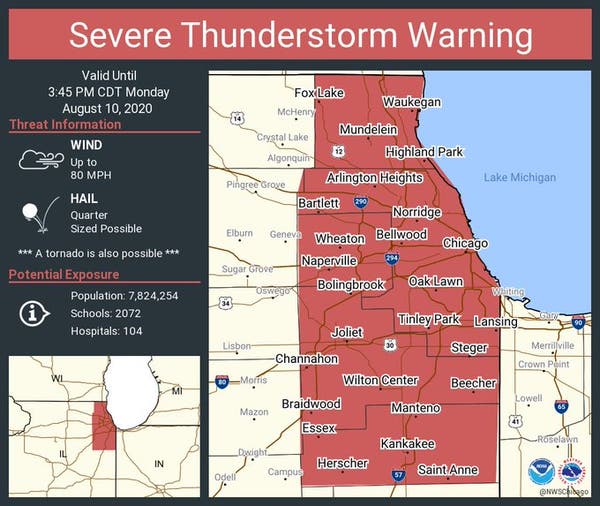Watch Out For Damaging Winds: Fast-Moving Storms

Table of Contents
Understanding Fast-Moving Storm Systems
Fast-moving storms are characterized by their rapid speed and the intense damaging winds they generate. These aren't your average thunderstorms; they are powerful weather systems capable of causing widespread destruction. Several types of storms can produce these devastating winds:
-
Derechos: These widespread, violent windstorms can travel hundreds of miles, leaving a path of destruction marked by straight-line damaging winds. They are often associated with strong thunderstorms and can produce wind speeds exceeding 75 mph (120 km/h).
-
Downbursts: These are intense downdrafts of air from a thunderstorm that can cause localized, extremely powerful damaging winds. These winds can reach hurricane-force speeds over small areas.
-
Squall Lines: These are lines of thunderstorms that often produce intense, sustained damaging winds along a relatively narrow band.
The meteorological processes behind these powerful winds involve a complex interplay of atmospheric instability, lift, and shear. Essentially, these systems create a powerful pressure gradient, resulting in exceptionally strong damaging winds.
-
Examples of Wind Speeds: Derechos can reach 80-100 mph; downbursts can exceed 100 mph in localized areas; squall lines often sustain winds above 50 mph for extended periods.
-
Susceptible Regions: The central US (particularly the Great Plains) is highly susceptible to derechos. Coastal regions are at risk of downbursts. Many areas can experience squall lines.
-
Gusts vs. Sustained Winds: It’s crucial to understand the difference. Gusts are short bursts of high wind speed, while sustained winds refer to the average wind speed over a longer period. Both are critical when assessing the potential for damaging winds.
Identifying the Signs of Approaching Damaging Winds
Recognizing the signs of an approaching storm with damaging winds is crucial for timely action. Pay attention to these visual and audible cues:
-
Visual Cues: Dark, ominous clouds; rapidly rotating clouds (possible tornadoes); rapidly changing weather conditions (e.g., a sudden drop in temperature, dramatic shifts in wind direction).
-
Audible Warnings: A sudden and significant increase in the rumbling of thunder; an increasingly intense howling wind.
It’s also critical to utilize modern technology to stay informed:
-
Monitor Weather Forecasts and Alerts: Stay updated with the National Weather Service (NWS) and local news channels for weather alerts and warnings.
-
Use Weather Apps and Radar: Utilize weather apps and radar to track the movement of storms and anticipate the arrival of damaging winds.
-
Recognizing Dangerous Wind Speeds: Familiarize yourself with the wind speeds associated with different levels of severity (e.g., high winds, damaging winds, hurricane-force winds).
Protecting Yourself and Your Property from Damaging Winds
Preparation is key to mitigating the impact of damaging winds. Take the following steps:
-
Before the Storm: Secure any loose outdoor objects (e.g., patio furniture, trash cans, garden decorations). Bring in any items that could become airborne projectiles.
-
Emergency Preparedness: Create a family emergency plan, including communication strategies and evacuation routes. Assemble an emergency kit with essential supplies (e.g., water, food, first-aid kit, flashlights).
-
During the Storm: Seek shelter in a sturdy interior room (e.g., basement, interior closet). Stay away from windows. Avoid driving unless absolutely necessary.
-
Protecting Homes and Businesses: Reinforce weak points in your structure. Consider storm shutters or impact-resistant windows.
-
Strengthening Structures: Consult with a structural engineer to assess and enhance the wind resistance of buildings.
-
Further Information: Refer to resources from FEMA and the Red Cross for detailed safety information and disaster preparedness guides.
Assessing Damage After a Fast-Moving Storm
After the storm has passed, safety remains paramount when assessing damage:
-
Safe Inspection: Always ensure your safety before assessing damage. Be cautious of downed power lines, broken glass, and other hazards.
-
Documenting Damage: Take photos and videos of any damage to your property for insurance claims. Keep detailed records of the damage.
-
Contacting Authorities: Contact your insurance provider to report the damage. Reach out to emergency services if needed.
-
Dealing with Hazards: Never approach downed power lines. Report them immediately to the relevant authorities.
-
Disaster Relief: Seek assistance from disaster relief organizations if needed.
Staying Safe from Damaging Winds
Fast-moving storms and their associated damaging winds pose a serious threat. Preparedness is critical. Understanding the different types of fast-moving storms, recognizing the warning signs, and taking proactive steps to protect yourself and your property are essential for minimizing risk. Knowing how to react to damaging winds can save lives and reduce property damage. Stay informed about approaching fast-moving storms and take proactive steps to protect yourself and your property from damaging winds. Knowing what to expect and how to react can save lives and minimize damage. For additional resources on storm safety and preparedness, visit the National Weather Service and FEMA websites.

Featured Posts
-
 From Ragbrai To Daily Rides Scott Savilles Passion For Biking
May 21, 2025
From Ragbrai To Daily Rides Scott Savilles Passion For Biking
May 21, 2025 -
 Snehit Suravajjula Defeats Sharath Kamal In Wtt Contender Chennai 2025
May 21, 2025
Snehit Suravajjula Defeats Sharath Kamal In Wtt Contender Chennai 2025
May 21, 2025 -
 Benjamin Kaellman Huuhkajien Uusi Taehti
May 21, 2025
Benjamin Kaellman Huuhkajien Uusi Taehti
May 21, 2025 -
 Juergen Klopp Set For Liverpool Return Before Seasons End
May 21, 2025
Juergen Klopp Set For Liverpool Return Before Seasons End
May 21, 2025 -
 Wtt Star Contender Chennai Unprecedented Participation From India 19 Paddlers
May 21, 2025
Wtt Star Contender Chennai Unprecedented Participation From India 19 Paddlers
May 21, 2025
